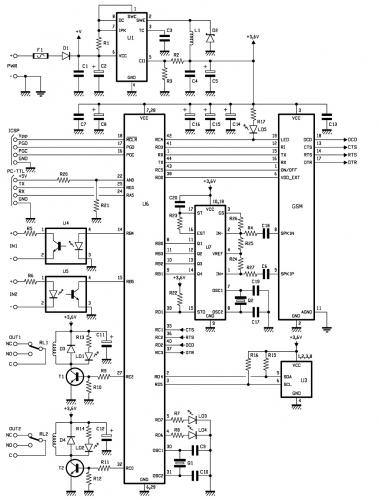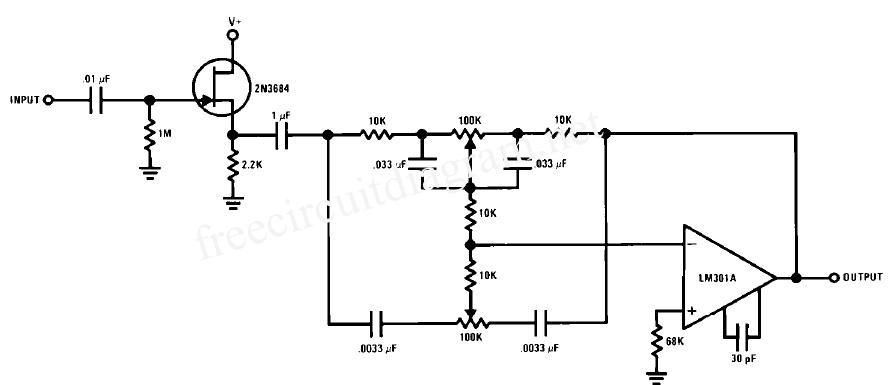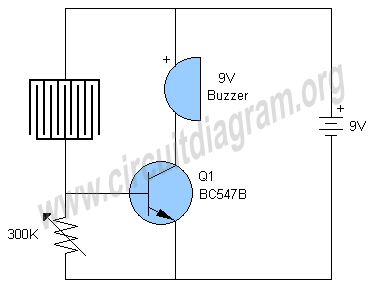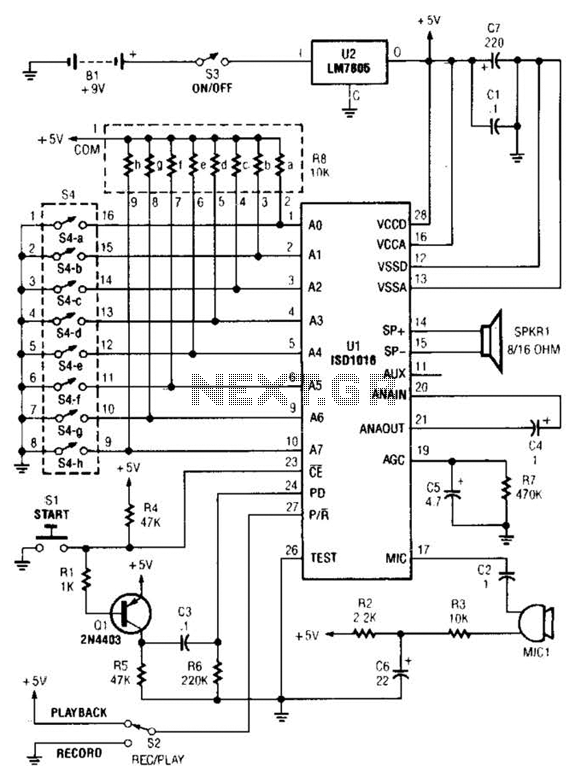
Heterodyne remote control receiving circuit diagram
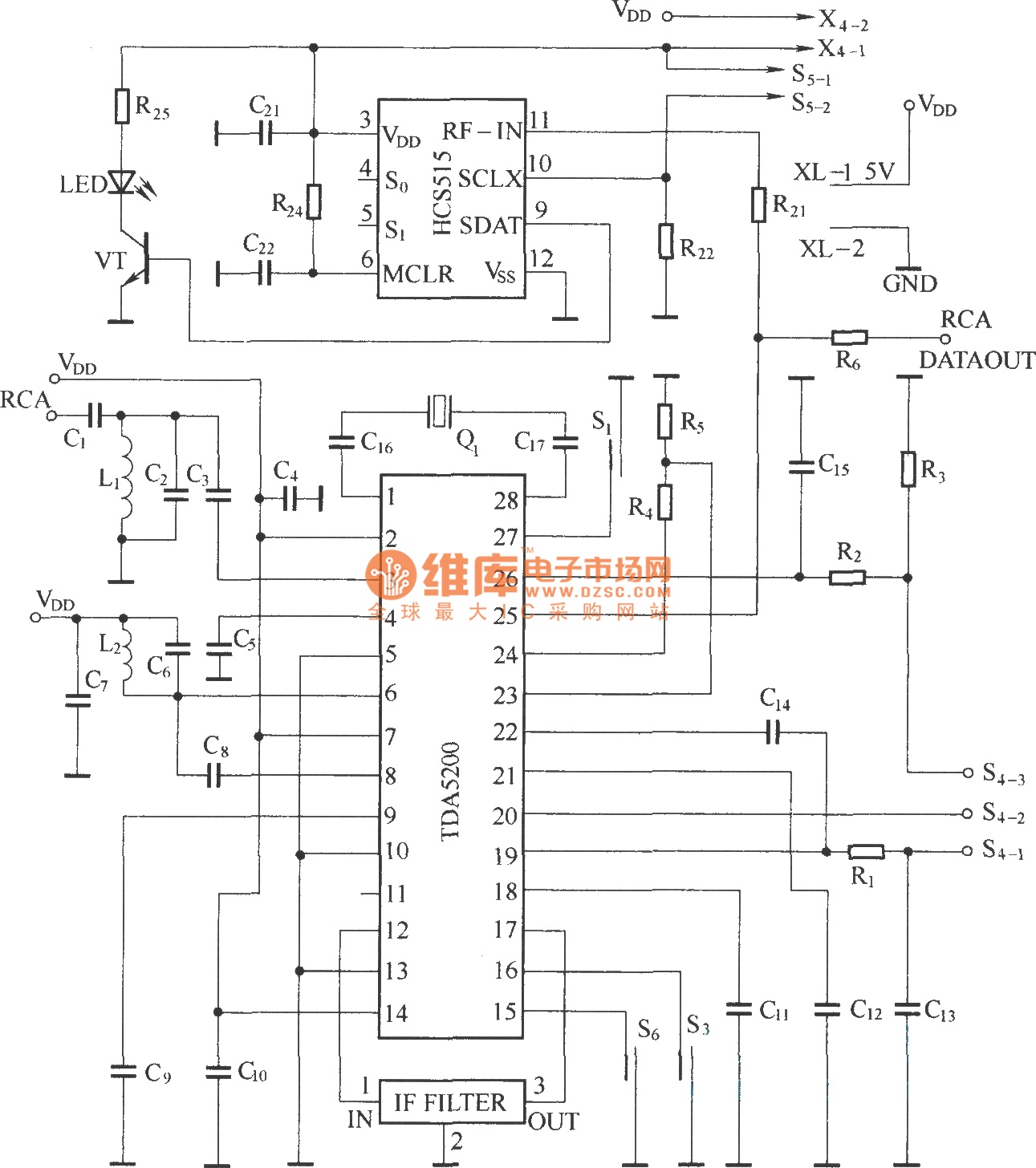
The TDA5200 is a low-power, single-chip ASK superheterodyne receiver circuit. It operates within two frequency blocks: 868 to 870 MHz and 433 to 435 MHz. This circuit is highly integrated, requiring minimal external components while offering excellent functionality. It serves as a single receiver circuit with outstanding performance.
The TDA5200 receiver circuit is designed for applications that require reliable wireless communication, such as remote control systems, sensor networks, and data transmission in various consumer electronics. Its superheterodyne architecture enables effective frequency conversion, allowing for improved sensitivity and selectivity compared to simpler receiver designs.
The integration level of the TDA5200 reduces the need for additional components, which simplifies the circuit design and minimizes the overall footprint of the application. Key features include a low noise amplifier (LNA), a mixer, and a demodulator, all incorporated within the single chip. The device also supports amplitude-shift keying (ASK) modulation, which is commonly used in low-data-rate communication systems.
The operating frequency range of 868 to 870 MHz is typically employed in European applications, while the 433 to 435 MHz range is often used in various international markets. The circuit's configuration allows for easy tuning and adaptability to different operating conditions, making it suitable for a wide array of applications.
To optimize performance, the TDA5200 includes built-in automatic gain control (AGC) circuitry, which adjusts the gain of the receiver to maintain a consistent output level despite variations in input signal strength. This feature enhances the reliability of the receiver in environments with fluctuating signal conditions.
Overall, the TDA5200 is an efficient solution for low-power wireless communication, combining high integration, minimal external components, and exceptional performance in a compact design, making it an ideal choice for modern electronic applications.TDA5200 is a low-power single-chip ASK superheterodyne receiver circuit. Its operating frequency range has two block. They are 868 ~ 870MHz and 433 ~ 435MHz. The circuit is highly integrated. It has few external components, perfect function. It is a single receiver circuit with excellentperformance.. 🔗 External reference
The TDA5200 receiver circuit is designed for applications that require reliable wireless communication, such as remote control systems, sensor networks, and data transmission in various consumer electronics. Its superheterodyne architecture enables effective frequency conversion, allowing for improved sensitivity and selectivity compared to simpler receiver designs.
The integration level of the TDA5200 reduces the need for additional components, which simplifies the circuit design and minimizes the overall footprint of the application. Key features include a low noise amplifier (LNA), a mixer, and a demodulator, all incorporated within the single chip. The device also supports amplitude-shift keying (ASK) modulation, which is commonly used in low-data-rate communication systems.
The operating frequency range of 868 to 870 MHz is typically employed in European applications, while the 433 to 435 MHz range is often used in various international markets. The circuit's configuration allows for easy tuning and adaptability to different operating conditions, making it suitable for a wide array of applications.
To optimize performance, the TDA5200 includes built-in automatic gain control (AGC) circuitry, which adjusts the gain of the receiver to maintain a consistent output level despite variations in input signal strength. This feature enhances the reliability of the receiver in environments with fluctuating signal conditions.
Overall, the TDA5200 is an efficient solution for low-power wireless communication, combining high integration, minimal external components, and exceptional performance in a compact design, making it an ideal choice for modern electronic applications.TDA5200 is a low-power single-chip ASK superheterodyne receiver circuit. Its operating frequency range has two block. They are 868 ~ 870MHz and 433 ~ 435MHz. The circuit is highly integrated. It has few external components, perfect function. It is a single receiver circuit with excellentperformance.. 🔗 External reference
